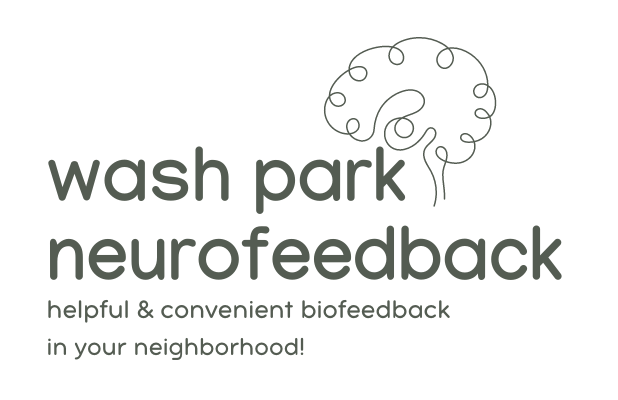Insomnia is a common sleep disorder that affects millions of people worldwide. Characterized by difficulty falling asleep, staying asleep, or waking up too early, insomnia can lead to a host of negative consequences, including fatigue, irritability, and impaired cognitive function. Traditional treatments for insomnia often involve medications, which can have side effects and may not address the underlying issues. However, an innovative approach to managing insomnia is gaining traction: NeurOptimal® neurofeedback therapy. In this blog post, we will explore how NeurOptimal® neurofeedback machines can help alleviate insomnia and improve overall sleep quality.
Neurofeedback in Sleep Management and Insomnia Can Work Wonders
Before delving into the benefits of Neuroptimal neurofeedback, it’s essential to understand what insomnia is and its potential causes. Insomnia can be classified into two main types: acute and chronic. Acute insomnia is often triggered by stress, anxiety, or significant life changes, while chronic insomnia persists for three months or longer and may be linked to underlying health conditions, mental health disorders, or lifestyle factors.
Common causes of insomnia include:
- Stress and Anxiety: Worries about work, relationships, or health can keep the mind racing at night, making it difficult to relax and fall asleep.
- Depression: Individuals with depression may experience changes in sleep patterns, including insomnia.
- Medical Conditions: Chronic pain, respiratory issues, and other medical conditions can interfere with sleep.
- Lifestyle Factors: Poor sleep hygiene, irregular sleep schedules, and excessive screen time before bed can contribute to insomnia.
Neurofeedback is a type of biofeedback that uses real-time monitoring of brain activity to help individuals learn how to self-regulate their brain function. NeurOptimal® neurofeedback, in particular, is a non-invasive system that provides users with feedback on their brainwave patterns, allowing them to make adjustments to achieve a more balanced state.
How NeurOptimal® Neurofeedback Works
NeurOptimal® neurofeedback machines use sensors placed on the scalp to measure brainwave activity. This data is processed in real-time, and users receive auditory and visual feedback based on their brain activity. When the brain is functioning optimally, the feedback is smooth and continuous. However, when the brain enters a less optimal state, the feedback becomes interrupted, prompting the user to adjust their mental state.
This process helps individuals learn to recognize and modify their brainwave patterns, promoting relaxation and reducing stress. Over time, users can develop greater control over their brain function, leading to improved sleep quality and reduced insomnia symptoms. Curious for more info? Check out this article straight from NeurOptimal® about how it works and how it can help.
Benefits of NeurOptimal® Neurofeedback for Insomnia
- Reduces Stress and Anxiety
One of the primary benefits of NeurOptimal® neurofeedback is its ability to reduce stress and anxiety levels. By helping individuals learn to self-regulate their brain activity, NeurOptimal® can promote a state of relaxation that is conducive to sleep. As users become more adept at managing their stress responses, they may find it easier to fall asleep and stay asleep throughout the night. - Improves Sleep Quality
Neurofeedback has been shown to enhance overall sleep quality. Users often report experiencing deeper, more restorative sleep after engaging in neurofeedback sessions. This improvement in sleep quality can lead to increased energy levels, better mood, and enhanced cognitive function during the day. - Addresses Underlying Issues
NeurOptimal® neurofeedback can help address some of the underlying issues contributing to insomnia. For example, individuals with anxiety or depression may find that neurofeedback helps alleviate their symptoms, leading to improved sleep. By targeting the root causes of insomnia, NeurOptimal® can provide a more holistic approach to sleep management. - Non-Invasive and Drug-Free
Unlike traditional insomnia treatments that often involve medications, NeurOptimal® neurofeedback is a non-invasive and drug-free option. This makes it an appealing choice for individuals who prefer to avoid pharmaceuticals or who have experienced negative side effects from sleep medications. - Personalized Experience
NeurOptimal® neurofeedback is tailored to each individual’s unique brain patterns and needs. This personalized approach allows users to focus on their specific challenges and goals, making it a highly effective tool for managing insomnia.
Tips on Incorporating NeurOptimal® Neurofeedback into Your Sleep Routine
If you’re considering using NeurOptimal® neurofeedback to help with insomnia, here are some tips for incorporating it into your sleep routine:
- Schedule Regular Sessions
Consistency is key when it comes to neurofeedback. Aim to schedule regular sessions, ideally a few times a week, to maximize the benefits. Over time, you’ll develop a better understanding of your brain patterns and how to regulate them effectively. - Create a Relaxing Environment
To enhance the effectiveness of neurofeedback, create a calming environment for your sessions. This could include dim lighting, comfortable seating, and minimal distractions. A peaceful setting can help you relax and focus on the feedback you receive. - Combine with Good Sleep Hygiene
While neurofeedback can be a powerful tool for managing insomnia, it’s essential to combine it with good sleep hygiene practices. This includes maintaining a consistent sleep schedule, creating a comfortable sleep environment, and limiting screen time before bed. - Monitor Your Progress
Keep track of your sleep patterns and any changes you notice after starting neurofeedback sessions. This can help you identify what works best for you and make any necessary adjustments to your routine. - Consult with a Professional
If you’re unsure about how to get started with NeurOptimal® neurofeedback, consider consulting with a professional who specializes in neurofeedback therapy. They can provide guidance on the best approach for your specific needs and help you navigate the process.
NeurOptimal® neurofeedback machines offer a gentle and effective solution for individuals struggling with insomnia.
By promoting relaxation, improving sleep quality, and addressing underlying issues, neurofeedback can help you regain control over your sleep patterns and enhance your overall well-being. If you’re looking for a non-invasive, drug-free approach to managing insomnia, Neuroptimal neurofeedback may be the answer you’ve been searching for.
About Wash Park Neurofeedback | NeurOptimal® Home Rentals
Wash Park Neurofeedback, based in Denver, Colorado, provides NeurOptimal® neurofeedback therapy rentals to clients across the nation. Our mission is to help individuals improve their mental health and cognitive performance through innovative neurofeedback solutions. Whether you’re dealing with insomnia, anxiety, or other mental health challenges, our NeurOptimal® neurofeedback machines can help you achieve a more balanced and resilient state. Reach out to us today to learn more about our rental options and how we can support your journey to better sleep and overall well-being.


Pingback: Rent a Neuroptimal® Neurofeedback Machine in Boulder, Colorado - Wash Park Neurofeedback